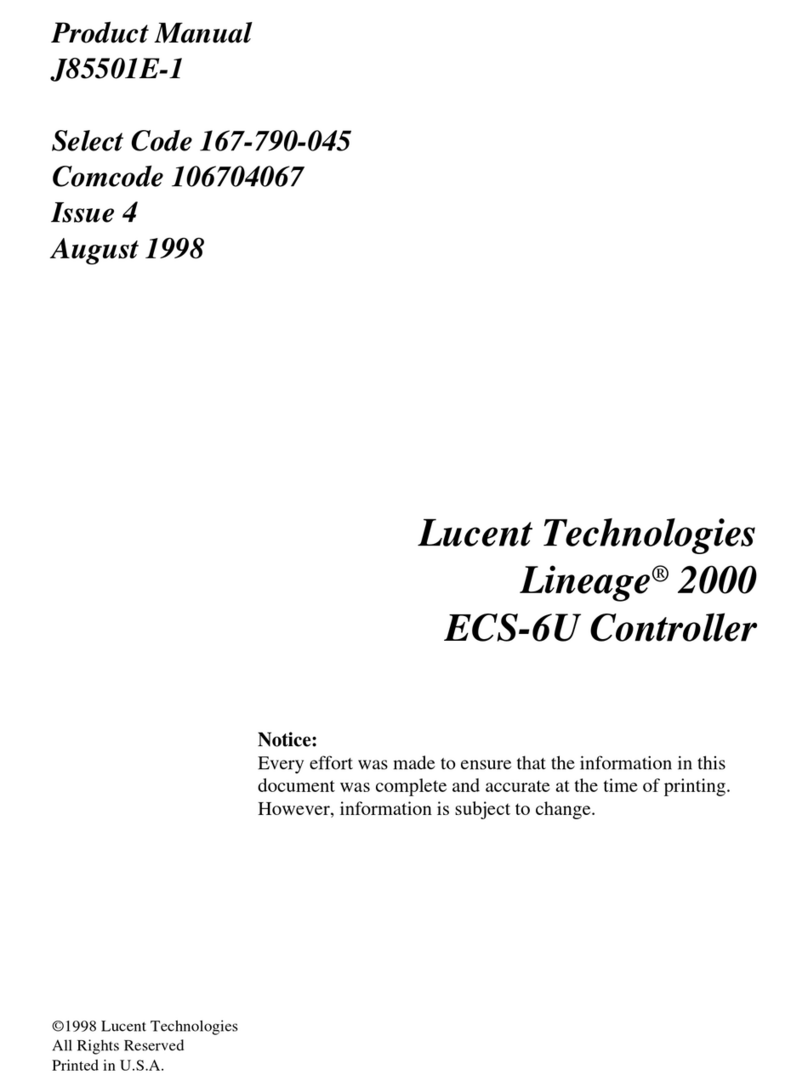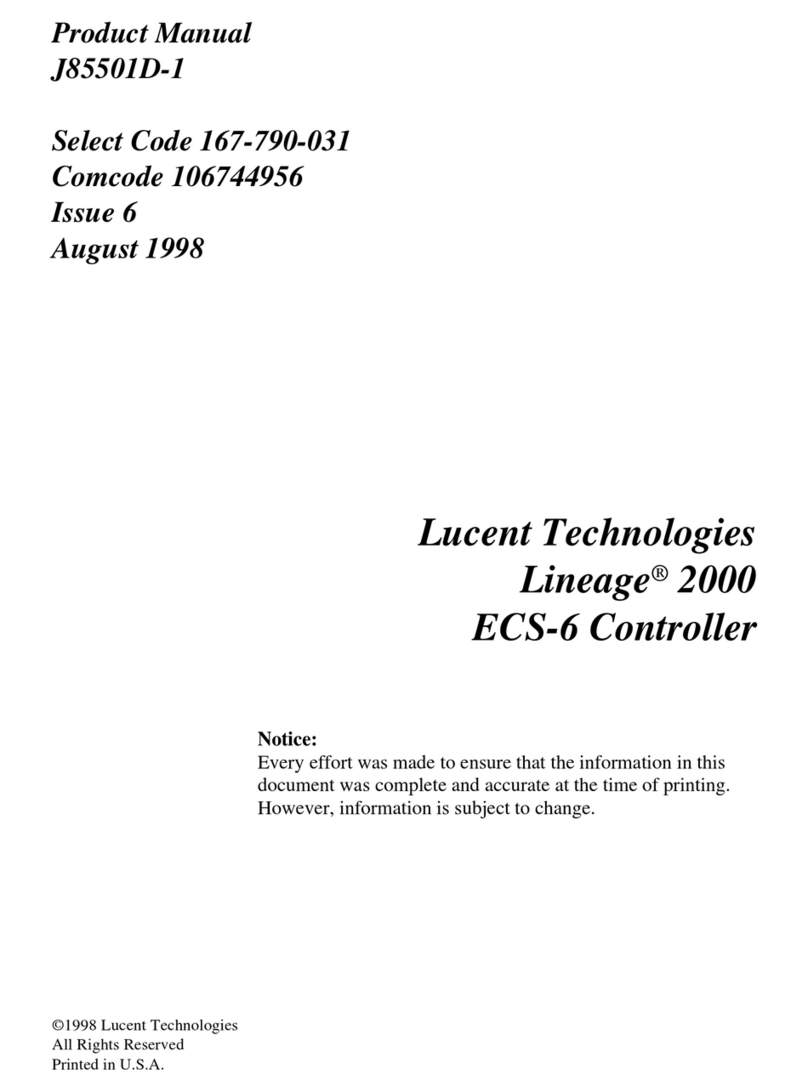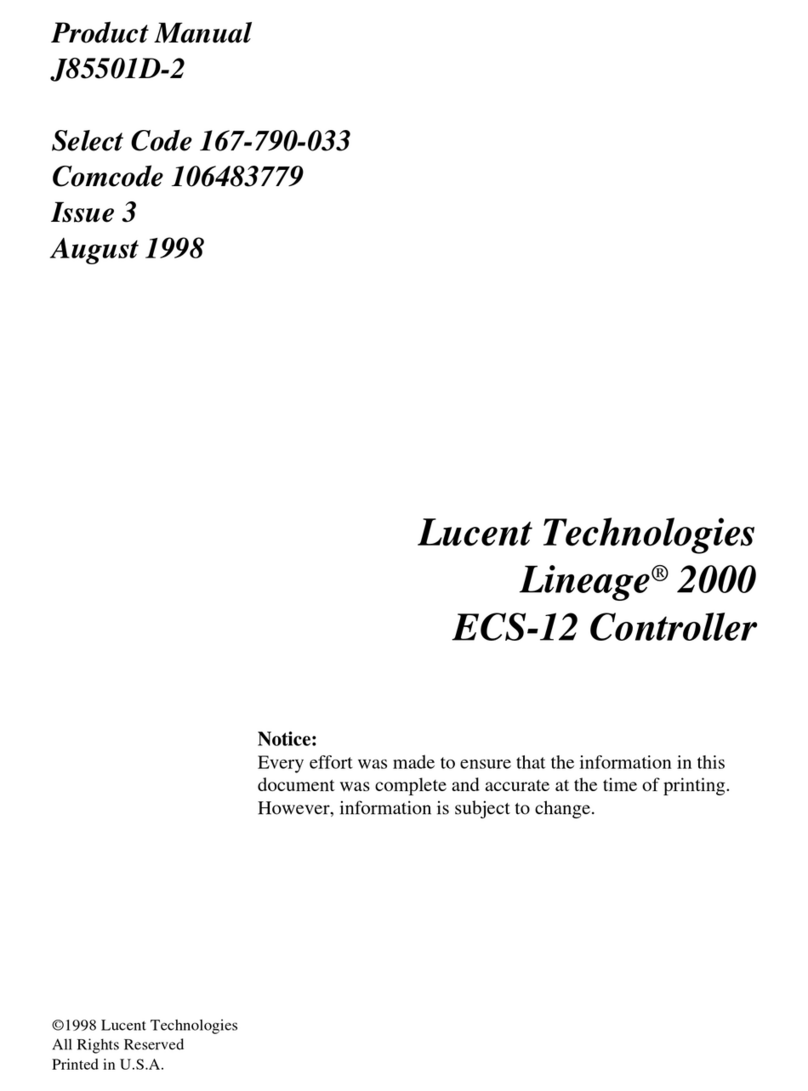
Lucent Technologies Lineage®2000 ECS-12U Controller J85501E-2
Issue 3 July 1998 Introduction 1 - 1
1 Introduction
General
Information This product manual, Select Code 167-790-056, describes the
J85501E-2 ECS-12U Universal Rectifier Controller. The basic
ECS-12U controller monitors and controls any combination of
up to 12 Lucent Technologies switchmode (SR) or ferroresonant
rectifiers and provides a single interface point for power alarm
and status reporting. When ordered with the optional
microprocessor and datalogger features, it adds the latest
technology in the product line to the battery plant.
When used with the optional Rectifier Adapter Board (RAB),
the ECS-12U controller allows rectifiers of various
technologies, vintages, and vendors to be tied together in the
same battery plant and can be used for retrofit applications in
older Lucent Technologies battery plants such as the 302 series
or the 326 series. It can also be used to replace older technology
controllers in other vendors' battery plants. Upgrading can be
accomplished by placing the controller in a supplemental bay or
in the same bay as the original equipment.
Appendix A is a list of the various Lucent Technologies
rectifiers, both J- and KS-coded, that have the automatic restart
feature and are compatible with the ECS-12U.
The ECS-12U demonstrates Lucent Technologies' continuing
dedication to providing state-of-the-art energy systems
management products for all battery plants, both old and new.
The Lineage®2000 Battery Plant product line is designed to
provide battery-backed common system office voltages of
+24Vdc, -24Vdc, or -48Vdc in telecommunications
applications.
The ECS-12U controller is shown in Figure 1-1. A view of a
typical ECS controller application is shown in Figure 1-2.































